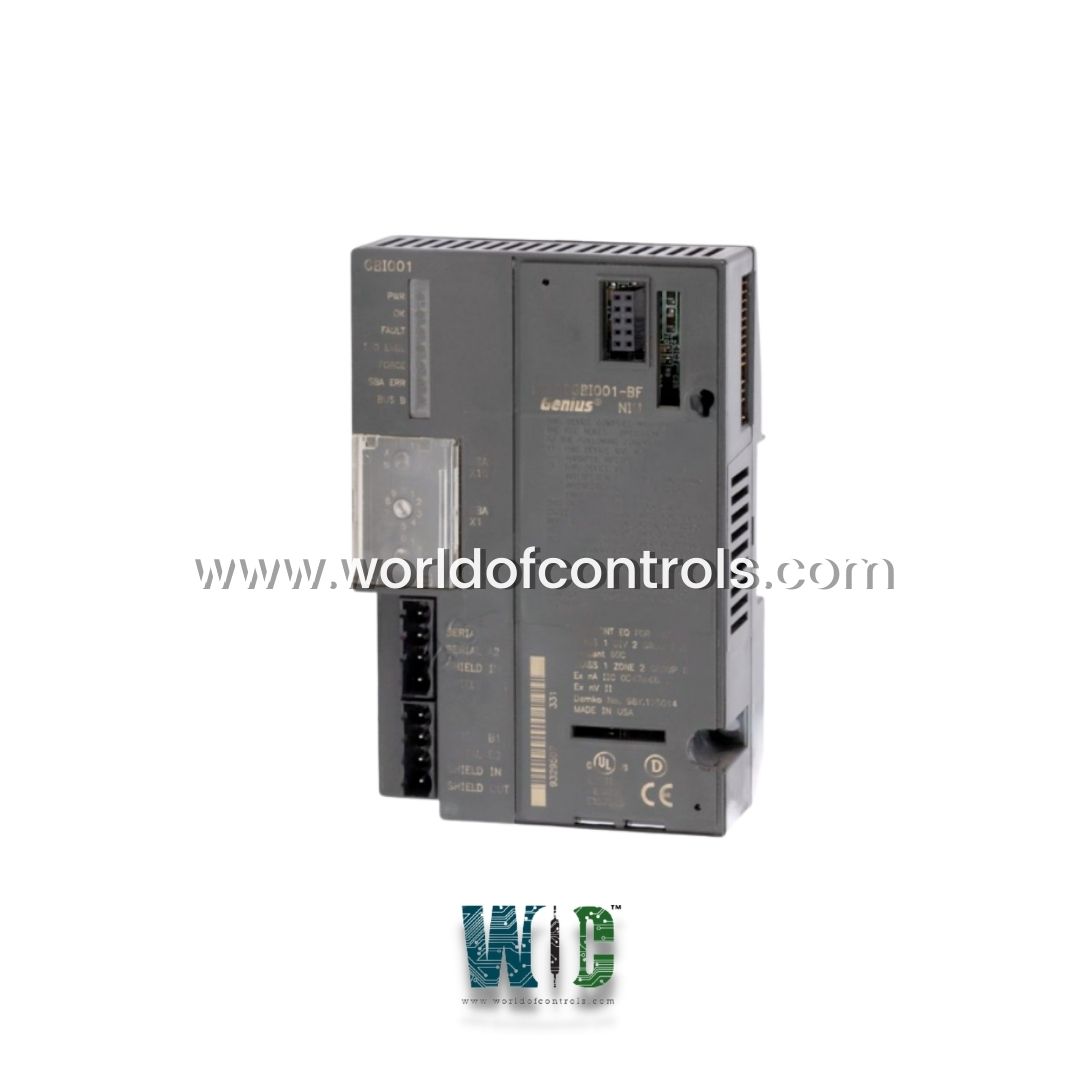
World Of Controls understands the criticality of your requirement and works towards reducing the lead time as much as possible.
IC200GBI001 - Genius Network Interface Module is available in stock which ships the same day.
IC200GBI001 - Genius Network Interface Module comes in UNUSED as well as REBUILT condition.
To avail our best deals for IC200GBI001 - Genius Network Interface Module, contact us and we will get back to you within 24 hours.
SPECIFICATIONS:
Part Number: IC200GBI001
Manufacturer: General Electric
Series: Versamax
Compatible controllers: Series 90-70
Manufacturer: GE Fanuc
Product Type: Genius Network Interface Module
No. of communication ports: Two Genius terminals
Redundancy: Supported
Product Type: Network Interface Unit
No. of modules: Eight (8) modules
Serial Bus Address Range: 0 to 31
I/O Memory: 1024 points
No. of Discrete I/O: 2048
Number of I/O: 64
Supported Transmission Rate: 153.6 k
Network Inputs/Bus Scan: 128 bytes
Wiring topology: Daisy-chain
Analog I/O Memory: 128 bytes
No. of racks: Eight (8) racks
Power Rating at 10 mA: 3.3 V
Power Rating at 250 mA: 5 V
No. of discrete inputs: 1024
Terminating resistor: 75, 100, 120, or 150 ohms
Availability: In Stock
Country of Origin: United States
FUNCTIONAL DESCRIPTION:
IC200GBI001 is a Genius Network Interface Module manufactured and designed by GE Mark II Series as part of the GE Speedtronic Gas Turbine Control Systems. The Genius Network Interface Unit acts as a controller for a set of I/O modules. Power for module operation is provided by a power supply that installs directly on the NIU. This module is capable of hosting up to eight (8) I/O modules per rack and supports the installation of up to eight (8) racks, allowing for a maximum of 64 I/O modules. It offers a transmission speed of 153.6 kbaud for extended network configurations, while standard configurations support speeds of 153.6 kbaud, 76.8 kbaud, and 38.4 kbaud. The IC200GBI001 can handle a significant number of I/O points, accommodating up to 1024 discrete input points, 1024 discrete output points, 128 bytes of analog input memory, and 128 bytes of analog output memory.
This module supports network scanning of 128 bytes of input data and 128 bytes of output data per scan. Its power consumption is rated at 250 mA at 4VDC and 10 mA at 3.3VDC. It is compatible with a wide range of control systems, as it supports the Genius protocol used in both legacy and modern platforms. Supported systems include the Series 90-70, PACSystem RX7i, and PACSystem RX3i, provided the appropriate firmware versions are installed on both the controller and the IC200GBI001 module. Additionally, the module features dual Genius connection terminals for flexible integration.
COMPATIBILITY:
WOC has the largest stock of OEM Replacement Parts for GE Speedtronic Control Systems. We can also repair your faulty boards and supply unused and rebuilt boards backed up with a warranty. Our team of experts is available round the clock to support your OEM needs. Our team of experts at WOC is happy to assist you with any of your automation requirements. For pricing and availability on parts and repairs, kindly contact our team by phone or email.
What is the Genius Network Interface Module?
The Genius Network Interface Module is a component designed by General Electric as part of the VersaMax series. This module serves as a controller for I/O modules in industrial automation systems, facilitating communication between devices and controllers using the Genius protocol. It is widely used in gas turbine control systems and applications requiring high-speed data transfer and redundancy.
How many I/O modules can this module support?
The Genius Network Interface Module can host up to eight I/O modules per rack and can support a total of up to 64 I/O modules across eight racks. This configuration allows for a flexible and scalable solution for various industrial control systems, particularly where large numbers of I/O points are needed for device integration.
What is the I/O capacity of this module?
The module supports a significant number of I/O points, making it suitable for complex industrial applications. It accommodates up to 1024 discrete input points and 1024 discrete output points, totaling 2048 discrete I/O points. Additionally, it offers 128 bytes of memory for both analog inputs and analog outputs, ensuring comprehensive I/O management for automation and control processes.